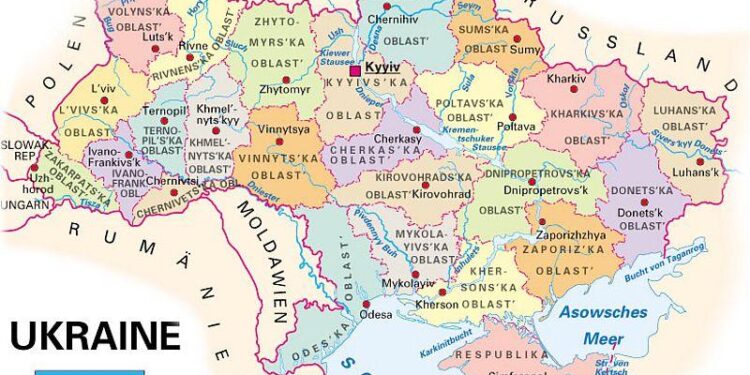In a conflict that has reshaped the geopolitical landscape of Eastern Europe, Ukraine’s resilience and strategic prowess have captured global attention. Despite facing a larger and better-equipped adversary, Ukraine continues to make significant gains on the battlefield, challenging early assumptions about the war’s trajectory. This article explores the key factors behind Ukraine’s unexpected success, analyzing military strategy, international support, and the internal dynamics that have enabled Kyiv to maintain momentum against daunting odds.
Ukraine’s Strategic Use of Western Military Aid Shifts the Battlefield Dynamics
Ukraine’s tactical deployment of Western military aid has fundamentally altered the contours of the conflict. Rather than relying solely on quantity, Ukrainian forces have prioritized integration, agility, and precision, ensuring each delivery of equipment directly complements their operational needs. This approach has enabled them to disrupt key Russian supply lines and reclaim strategic territory despite facing a numerically superior adversary.
Several critical factors highlight the effectiveness of Ukraine’s aid utilization:
- Advanced training programs accompany new weapon systems, accelerating combat readiness.
- Real-time intelligence sharing maximizes the impact of precision strikes.
- Flexible logistics networks ensure rapid distribution of supplies to frontline units.
| Weapon System | Deployment Rate | Battlefield Impact |
|---|---|---|
| HIMARS | High | Disrupted artillery positions |
| Panzerfaust 3 | Moderate | Neutralized armored vehicles |
| Stinger Missiles | Steady | Countered air threats effectively |
Economic Resilience and Domestic Innovation Fuel Ukraine’s Sustained Defense
Amid the ongoing conflict, Ukraine’s ability to sustain its defense hinges significantly on robust economic strategies intertwined with burgeoning innovation sectors. Despite facing severe hardships, the nation’s economy has demonstrated remarkable adaptability, buoyed by a combination of international financial support and resilient domestic enterprises that continue to operate under pressure. This dynamic has not only ensured the steady production of critical military supplies but has also propelled breakthroughs in technology, empowering Ukrainian forces with homegrown advancements that are tailored precisely to their operational needs.
Key to this economic tenacity is a collaborative ecosystem that fosters rapid development and deployment of indigenous technologies, ranging from drone warfare to cyber-defense solutions. Ukrainian innovators benefit from strong governmental incentives, private sector engagement, and international partnerships, which together drive continuous progress. The following table highlights some of the primary sectors fueling this resilience:
| Sector | Contribution to Defense | Notable Innovation |
|---|---|---|
| Manufacturing | Supplies military-grade equipment | Rapid production of armored vehicles |
| Information Technology | Cybersecurity and intelligence | AI-powered drone navigation |
| Energy | Ensures sustained power supply | Hybrid renewable energy grids |
| Research & Development | Innovates tactical defense tools | Advanced missile countermeasures |
- Economic stability allows for uninterrupted defense funding despite global uncertainties.
- Homegrown innovation provides strategic advantages that external aid alone cannot.
- Integrated supply chains reduce dependency and increase resilience under blockade conditions.
Strengthening International Alliances Essential for Maintaining Momentum
Ukraine’s resilience on the battlefield is deeply intertwined with the robust network of international partnerships that continue to fuel its defense capabilities. Allies have not only provided advanced weaponry and intelligence support but have also orchestrated sanctions and diplomatic pressure that isolate adversarial forces economically and politically. This intricate web of cooperation demonstrates the strategic advantage derived from unity, enabling Ukraine to maintain momentum against persistent aggression.
Key elements of these alliances include:
- Coordinated military aid: Troop training, cutting-edge technology transfers, and synchronized tactical intelligence sharing.
- Economic sanctions: Targeting critical infrastructure and financial channels to impair enemy logistics.
- Unified diplomatic front: Ensuring sustained international condemnation and support in global forums.
| Alliance Contribution | Impact |
|---|---|
| Military Equipment Supply | Enhanced frontline effectiveness |
| Intelligence Sharing | Improved strategic decision-making |
| Sanctions Implementation | Weakened adversary’s economic backbone |
| Diplomatic Support | Strengthened global legitimacy |
Future Outlook
As the conflict continues to unfold, Ukraine’s resilience and strategic advantages remain central to its successes on the battlefield. While challenges persist, the combination of international support, effective leadership, and determined resistance underpins Kyiv’s current momentum. The Financial Times will continue to monitor developments closely, providing in-depth analysis of how this pivotal conflict shapes the geopolitical landscape moving forward.
















